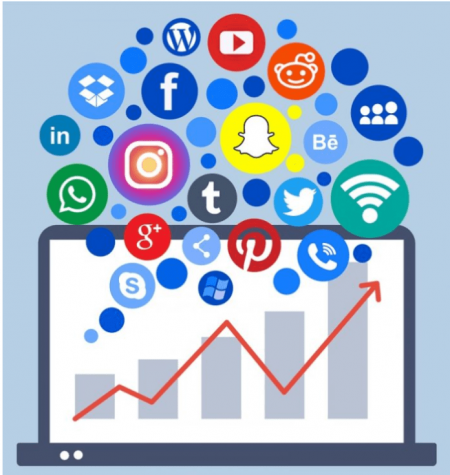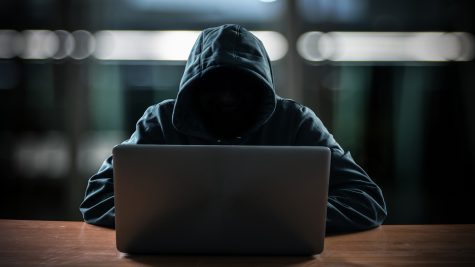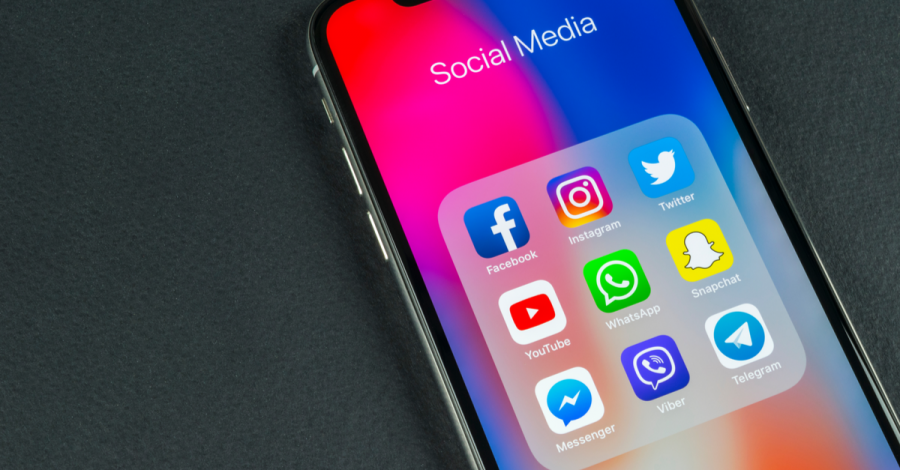How Has COVID-19 Changed Social Media?
Many people have found social media to be an outlet from the reality of the current situations the world is facing such as the COVID-19 pandemic. Social media has also been used to keep in touch with friends and families in a time when people can not physically be together.
Feb 16, 2021
In March 2020, the virus, COVID-19, resulted in a nationwide lockdown. As schools shut down and people found their living room to become their brand new office, their entire lives were changed. The way humans have interacted with others has only been from a six foot distance as families closed their doors to their homes and isolated themselves away from the world.
With most of the U.S. still in lockdown, we are online more than ever. Whether it’s working from home, attending school online or even just catching up with friends via video calls, the “face” of our social interactions has drastically changed.
Since the breach of the pandemic, social media has seen a large increase in user engagement as well as overall use. In 2020, a 20% increase in social media use was reported as compared to 2019. This increase roughly translates to 4.54 billion people using social media in their daily lives.

One reason for the increase in social media use during this pandemic is boredom. While stuck in quarantine, social media platforms such as Instagram and TikTok have become a fun escape from the overwhelming news of reality and also help to pass the long hours of being stuck at home.
In the article “How COVID-19 Has Changed Social Media Habits”, author Victor Synder states,
“It’s a natural human response to seek uplifting, inspirational content during difficult times. It’s hard to imagine any populations left in the world that don’t already know about the dangers of the coronavirus and the risks of infection. No one wants to hear about how to socially distance or wash their hands anymore, or about the negative impact of the pandemic itself”.
Apps like TikTok and Instagram have given users the much wanted fun and cheerful content, allowing them to escape from the reality of the pandemic and its protocols.
However, the increase in social media use isn’t all good. Many teens are suffering from the 70% increase of cyberbullying on social media platforms. The reason for such a large increase in cyberbullying is most likely due to the CDC’s social distancing guidelines, resulting in loneliness, boredom, and increased stress among many teens.
In the article, “How COVID-19 Is Impacting Cyberbullying” by Sherri Gordon, Gordon writes,
“Kids sometimes engage in cyberbullying because they are bored, lonely, or want attention. And, because this pandemic exacerbates those issues this is also leading to an increase in mean behavior online. As a result, some kids are cyberbullying others to not only relieve stress but also because they are bored. Cyberbullying feeds their need for attention—even if it’s negative attention”.
However, sophomore Arianna Dezfulian believes the best way to deal with cyberbullying is by not interacting with the user.
“In some situations, it’s best if you just don’t respond at all because then you don’t give them this fuel to bring you down. They are just looking for a reaction out of you,” stated Dezfulian.

Cyberbullying has been an issue long before the pandemic, however with many schools still online the massive increase in cyberbullying has taken a toll on many teens mental health. Cyberbullying has been known to cause anxiety, depression, and low self-esteem in young adults.
To stay safe from the effects caused by cyberbullying it’s best to not retaliate in any form of bullying, this will only turn oneself into the bully as well. It’s also important to reach out for help if the cyberbullying escalates, talk to someone trustworthy about the issue and handle it together.
Social media has also become a place to spread awareness about certain issues. Platforms such as Instagram, Facebook, and Twitter have been the go-to places to spread current and up to date news about the many issues of the world. The CDC’s instagram account is one of the great places to keep up to date on the latest COVID-19 news and how to stay safe and protected in this pandemic.
“Guidelines, protocols and standardized operating procedures, usually kept within institutions, are being shared at an unprecedented rate during the pandemic, with social media being used as an effective vehicle,” stated Adrian Wong in his article, “The use of social media and online communications in times of pandemic COVID-19”.
At a time when people have little to no interaction with the outside world, it’s easy to feel the loss of the human need for connection with others. Many friends and families have helped others stay in touch through messaging on social media platforms as well as interacting with others’ Instagram stories and posts to catch up with friends’ lives during quarantine.
The public has even been supporting one another through these difficult times by creating encouraging hashtags such as #StayAtHomeChallenge and #DoNotRushChallenge to produce a sense of togetherness in a time when families can’t physically be together. These hashtags have even sparked creativity in the minds of pandemic-fatigued folks to start finding ways to engage themselves with at home activities such as arts and crafts. Many of these hashtags have created a safe and comforting online community for people to interact with while staying at home as well.
However, staying informed on social media platforms has resulted in much fake news, causing outrage and panic among many.

“In the early stages of the pandemic, prior to formal publications or webinars, the only sources of information available were via the internet and social media. Sharing/re-tweeting is a mechanism by which original content is distributed to fellow social media users – items that gain traction can be passed on hundreds or thousands of times within days. This is advantageous when useful content reaches a large audience but can also significantly amplify any inaccuracies in the content,” said Wong.
Dezfulian believes the only way to save yourself from the overwhelming torrent of disinformation is to do your own fact-checking, cross-referencing data and investigating sources.
“I think [social media] is a great escape from reality and the current situation we are in right now. I also feel like there is some good information. You can go on [social media platforms] and you can look up accounts, especially like the CDC, which has great information,” said Dezfulian.
Knowing one’s sources is a very good way of making sure the information is credible. Fact-checking used to be solely the responsibility of journalists, but in the now wild west of the internet, news readers have to do their own background checks on who’s putting the information out there and whether it is actually credible or not.
It’s also important to make sure the sources are in authority on the information they are publishing. For example, the CDC is an authority on disease control. Whereas, some articles about COVID-19, even if written by a doctor, could be authored by anyone that has a doctorate in any random unrelated field and have inaccurate information presented.
In this time when people can’t actually face each other, social media is a great way to connect with others. At the same time, the internet is also an unregulated source of both information and misinformation. While there are pros and cons to interacting on social media while communities are all physically isolated, it’s important to remember there are both good and bad aspects of every interaction, even face-to-face.






